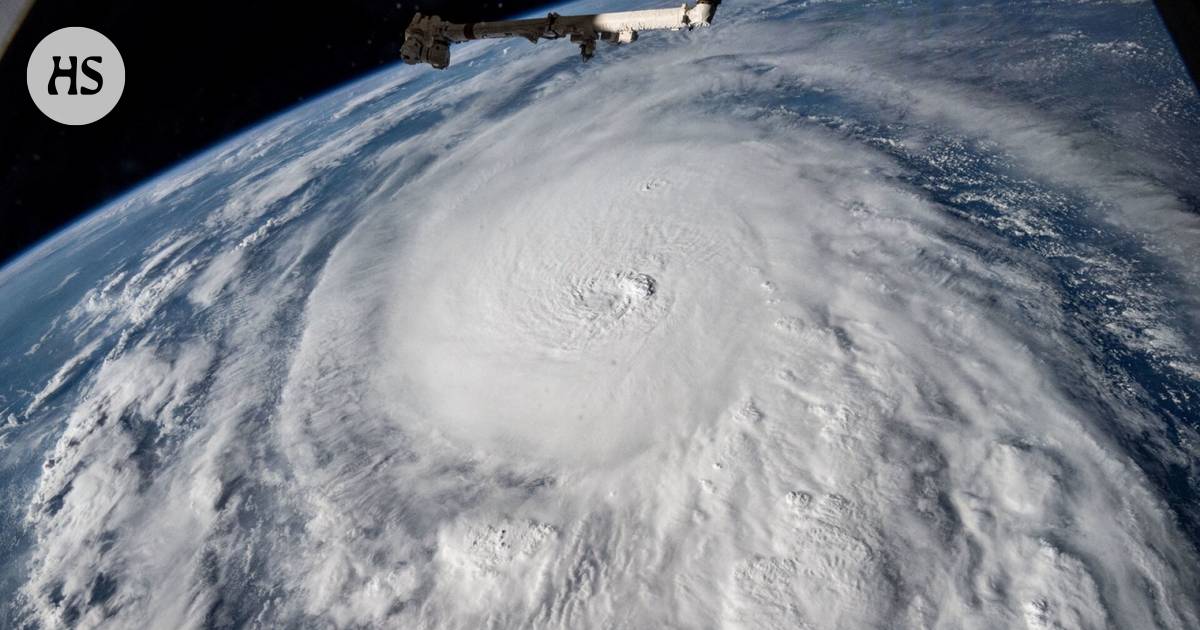Hirmumyrskyt|About 320 kilometers per hour is perhaps the upper limit of hurricane wind speeds. Hurricane Milton’s winds reached nearly 300 kilometers per hour before the Florida coast.
The summary is made by artificial intelligence and checked by a human.
The theoretical upper limit of hurricane wind speeds has been calculated to be around 320 kilometers per hour.
The seas are warming, so hurricane wind speeds will increase in the 2020s.
Five storms have briefly exceeded 300 km/h since 2013.
Scientists are considering a new sixth category for ferocious storms. The category would be for winds with a speed exceeding 300 kilometers per hour.
How powerful hurricanes can be?
A theoretical upper limit has been calculated for hurricane wind speeds.
The dreaded hurricane Milton reached the coast of Florida on Thursday Finnish time. Since the beginning of the week, its wind speed was measured at 298 kilometers per hour, or about 83 meters per second. The upper limit has been set at around 320 kilometers per hour, i.e. slightly less than 89 meters per second.
Milton drifted from the Gulf of Mexico over Florida and already died down a bit. Yet its winds are still exceptionally fierce.
If the seas continue to warm in the 2020s and beyond, the upper limit of the hurricane “speed limit” may increase. The temperature of the sea is the fuel of the hurricane.
Storm researchers say there is a limit to wind speeds, but that can change.
The wind the upper speed limit is determined by several factors. So the most important thing is the heat of the ocean.
The speed limit for hurricane winds is relatively easy to calculate, claims the retired climate scientist James Kossin.
He worked at the US National Oceanic and Atmospheric Administration (NOAA). Today, he consults and models climate risks.
Different factors can be grafted into a calculated formula, says the website Live Science.
“The warmer the sea water is, the more fuel is available for the hurricane,” says Kossin on the pages.
Other factors are, for example, the current temperature of the air. The temperature of the upper parts of the storm cloud or clouds has a lot to do with it. Also how quickly heat is transferred from sea level to the top of the storm.
Wind speeds and their directions at different heights in the atmosphere have an effect. Wind can also weaken a hurricane if it tears the storm apart.
Telephone poles were too flimsy for storm winds in Fort Myers, Florida.
Storms has long been modeled by the professor emeritus of MIT University Kerry Emanuel. He states on the website of Live Science that the possibility of violent storms has increased over the past 30 years.
At the same time, the number of “monstrous” storms has also increased.
In five recorded hurricanes, winds have momentarily exceeded 300 kilometers per hour. All five have been measured since 2013.
Scientists identify five storms that fit into the most ferocious category: Typhoon Haiyan (2013), Hurricane Patricia (2015), Typhoon Meranti (2016), Typhoon Goni (2020), and Typhoon Surigae (2021). A typhoon is a southwest Asian cyclone.
If we don’t try to contain the storms in any way, the upper limit of the winds will approach 350 kilometers per hour, says Emanuel.
At the same time, hurricanes become “juicier”. They carry more water with them.
It will rain more, he says on a podcast about storms editor of the popular science magazine Scientific American Rachel Feltman.
For storms perhaps a whole new category should be developed, number six. It would have been reserved for winds blowing well over 300 kilometers per hour.
Hurricanes are classified On the Saffir–Simpson scale. It ranges from category 1, i.e. wind blowing at around 120 kilometers per hour, up to category five. In Vitos, the speakers already exceed 250 kilometers per hour.
Saffir–Simpson calculates wind speeds from minute averages, says in Tiede magazine Researcher at the Department of Meteorology Terhi Laurila.
However, meteorologists in Finland calculate ten-minute averages. This is also recommended by the World Meteorological Organization.
One of the slowest moving hurricanes, Hurricane Frances, hit the coast of Florida in 2004.
